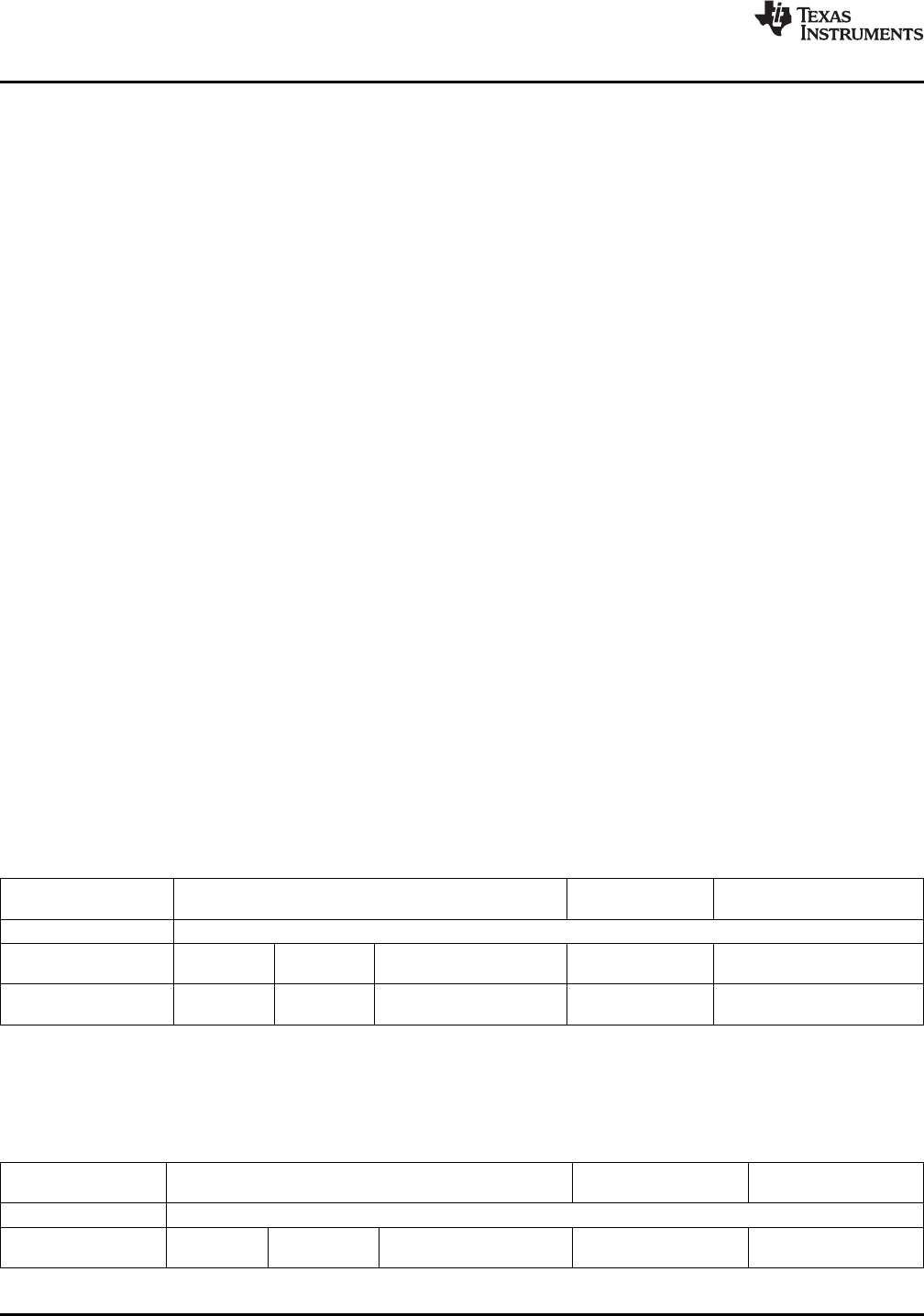Datasheet
Table Of Contents
- FEATURES
- APPLICATIONS
- DESCRIPTION
- ABSOLUTE MAXIMUM RATINGS
- RECOMMENDED OPERATING CONDITIONS
- ELECTRICAL CHARACTERISTICS
- PIN ASSIGNMENTS
- TYPICAL CHARACTERISTICS: INTERNAL FILTER
- TYPICAL CHARACTERISTICS
- GENERAL DESCRIPTION

Interface #1
Interface #2
PCM2912A
SLES230 – SEPTEMBER 2008 ..........................................................................................................................................................................................
www.ti.com
Input terminal #3 is defined as USB stream (terminal type 0x0101). Input terminal #3 can accept two-channel
audio streams constructed by the left and right channels. Output terminal #6 is defined as a speaker (terminal
type 0x0301). Input terminals #1 and #7 are defined as Microphone (terminal type 0x0201). Physically, these two
input terminals are the same input, but logically duplicated. Output terminal B is defined as a USB stream
(terminal type 0x0101). Output terminal B is a single-channel audio stream. Mixer unit #4 multiplexes the analog
input (sidetone) and the audio data of the digital-to-analog converter (DAC). Mixer unit A is placed in front of
output terminal B. Mixer unit A has no impact on recording data. Mixer units #4 and A do not have programming
capability.
Feature unit #5 supports the following sound control features for analog outputs:
• Volume control
• Mute control
The built-in volume controller can be manipulated by an audio-class-specific request from 0 dB to – 76 dB in
steps of 1 dB. An individual (L and R) channel can be set for different values. The built-in mute controller can be
manipulated by an audio-class-specific request. Only the master mute control request is acceptable.
Feature unit #2 supports the following sound control features for analog input (sidetone):
• Volume control
• Mute control
The built-in volume controller can be manipulated by an audio-class-specific request from 0 dB to – 76 dB in 1-dB
steps. Only the master volume control is acceptable. The built-in mute controller can be manipulated by
audio-class-specific request. Only the master mute control request is acceptable.
Feature unit #8 supports the following sound control features for analog input (microphone record input):
• Volume control
• Mute control
The built-in analog volume controller can be manipulated by an audio-class-specific request from +30 dB to – 12
dB in 1-dB steps. The built-in mute controller can be manipulated by an audio-class-specific request. Only the
master mute control request is acceptable.
Interface #1 is the audio streaming interface for data output. Table 4 lists the three alternative settings for
Interface #1. Alternative setting #0 is the zero bandwidth setting. All other alternative settings are operational
settings.
Table 4. Interface #1 Alternative Settings
ALTERNATIVE
SETTING DATA FORMAT TRANSFER MODE SAMPLING RATE (kHz)
00 Zero Bandwidth
8, 11.025, 16, 22.05, 32, 44.1,
01 16 bit Stereo 2s complement (PCM) Adaptive
48
8, 11.025, 16, 22.05, 32, 44.1,
02 16 bit Mono 2s complement (PCM) Adaptive
48
Interface #2 is the audio streaming interface for data output. Table 5 shows the two alternative settings for
Interface #2. Alternative setting #0 is the Zero Band Width setting. Alternative setting #1 is an operational setting.
Table 5. Interface #2 Alternative Settings
ALTERNATIVE
SETTING DATA FORMAT TRANSFER MODE SAMPLING RATE (kHz)
00 Zero Bandwidth
8, 11.025, 16, 22.05, 32,
01 16 bit Mono 2s complement (PCM) Asynchronous
44.1, 48
20 Submit Documentation Feedback Copyright © 2008, Texas Instruments Incorporated
Product Folder Link(s): PCM2912A










